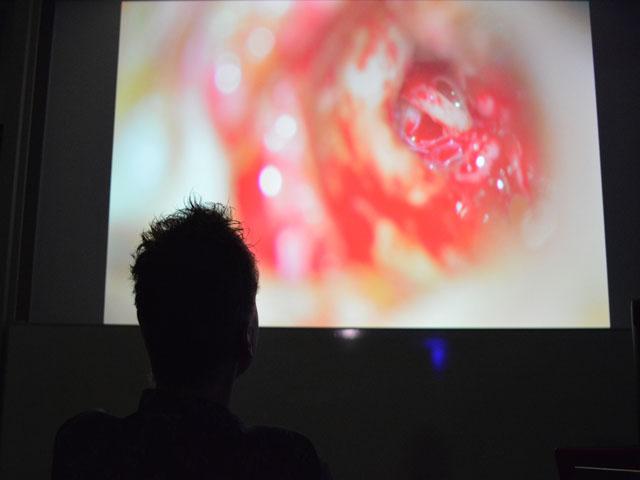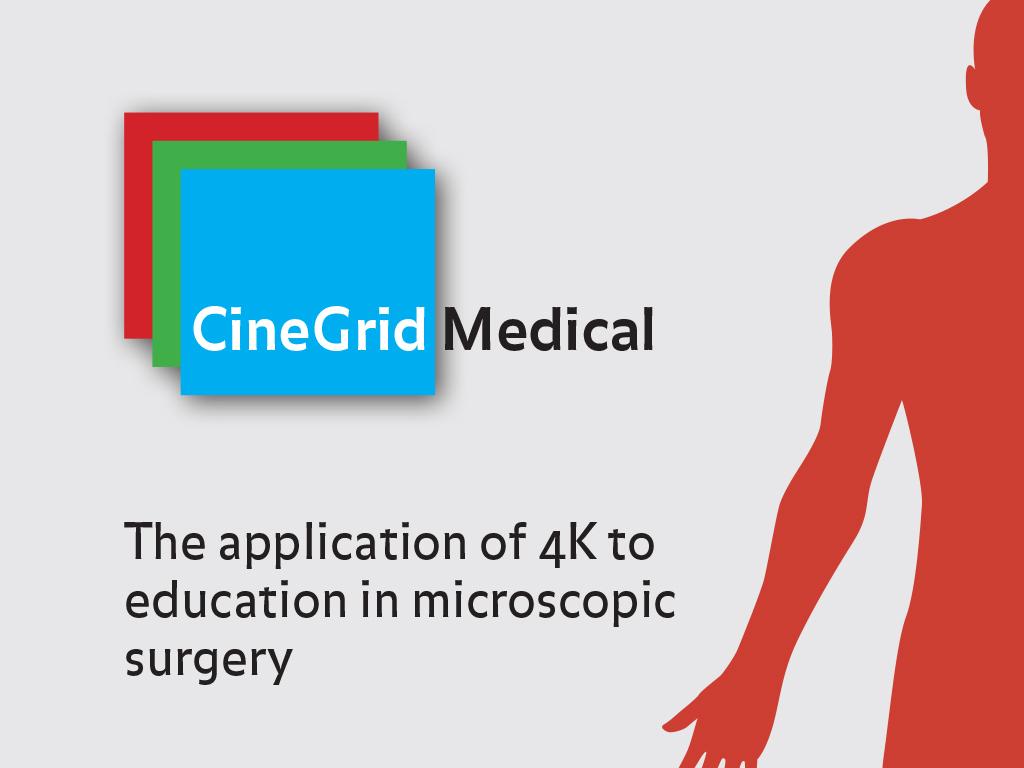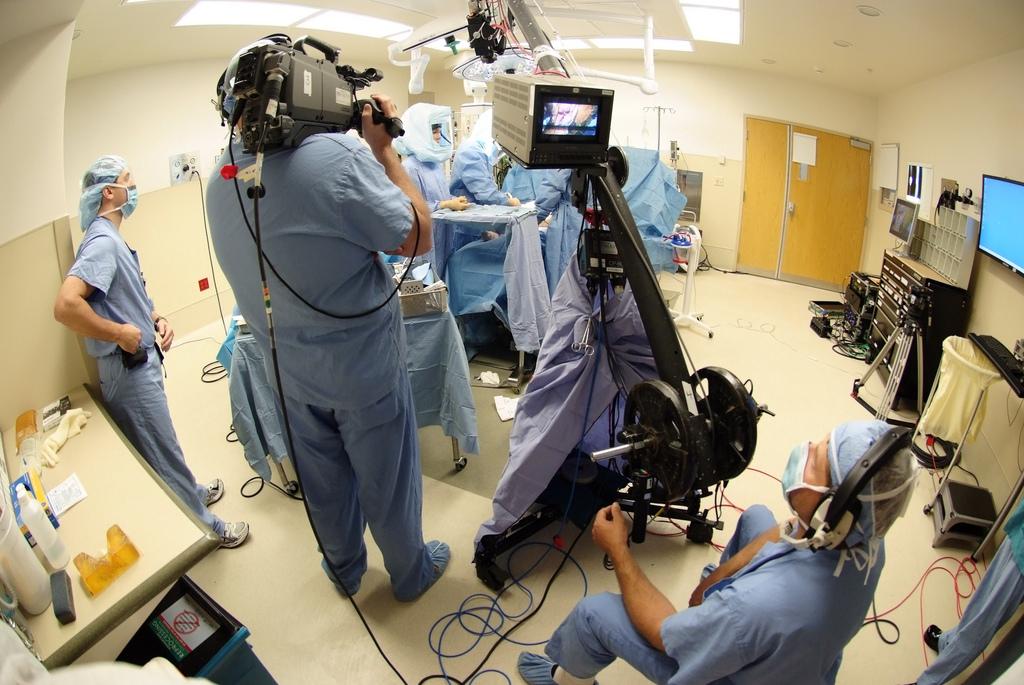Live streaming an operation in Ultra High Definition into a lecture room. On the 11th of December Waag, SURFnet and the Medical University of Utrecht (UMCU) made this happen. During this pilot, called ‘Future Operations’, we went on a trip inside the ear.
07:30 AM – When we arrived in the Medical University of Utrecht (UMCU), we were looking for the place where it all would happen soon. We were directed to the ‘Colloquiumzaal’, a conversation room on the 5th floor, which had been transformed into a lecture room. My eye spotted a big shiny beamer directly. It was clear that we would be learning new things today, both medical and technical. There was one big white screen on which we would be following the operation in detail. And to make the pilot even more unique, the University of Groningen was also listening and watching along. Via a light path, a superfast direct connection between 2 locations, it’s possible for the students and staff members of the University of Groningen to follow the operation live and interact in the mean time. The spokesman from the University of Groningen waved. The connection was good.
07:45 AM – The purpose and meaning of this day becomes clear after a short introduction by Frank Kresin from Waag. What does the term 4K actually mean? In a nutshell: 4K stands for Ultra High Definition, visuals as well as audio are four times sharper than the current High Definition quality. This literally means four times as much detail and a larger viewing angle, without compromising the perceived image quality. You can imagine that this is a huge step forwards in de medical industry, of which especially students and professionals can take advantage. But in which way can 4K be implemented educationally in de medical field? This appeared to be the central question during this ‘Future Operations’ pilot.
08:30 AM – The patient, who had agreed with the entire process, is narcotized at this moment. The live streaming of the operation will start soon! Suddenly an ear appears on the big screen. We are connected with the operation room. Professor Wilko Grolman, head of the KNO department in the Medical University of Utrecht, was going to perform a (revision-) stapedectomie. This operation is needed for people who suffer from otosclerose, a disease that causes hearing loss. One wrong move or a shaking hand can be crucial for the patient. This isn't as easy as it might look.
08:45 AM – The operation is executed at this very moment. In Ultra HD we are witnessing how the surgeon cuts the ear open. To be honest, I wasn’t looking forward to this particular part. We dive into the inside of the ear, which turns out to be a fascinating visual spectacle. Professor Grolman explains every movement he makes precisely. The red blood vessels and pieces of cartilage seem almost surrealistic and I am amazed by all the tiny little details I see.
09:00 – Time for the supreme moment. The surgeon inserts the prosthesis, which only millimeters tall. A couple of very important nerves are only a few millimeters away from where the prosthesis has to be placed. Because of the sharp visuals in combination with the clear explanation, I am able to experience the operation through the eyes of the surgeon. In the meantime, Professor Grolman is answering questions from the students.
09:30 – The operation is successfully completed and it is time to evaluate the technology. How did the people in both Utrecht and Groningen experience the live streaming? And in which way can we use this kind of technology to improve medical education? Students from the University of Groningen state that they can take advantage of the interactive element of the live streaming. Especially the direct contact with the surgeon by asking questions during the operation, is considered a valuable development. Another conclusion indicates that first year students don’t need visual details as much as students who are in their specialization. Besides this, there were also comments concerning more technical matters. For example, the streaming of the images and audio wasn’t synchronal. This has to be developed in the future.
After this first operation, two other patients with similar hearing problems are operated and the process is streamed live in 4K. Apart from a couple of small audio and visual disturbances, the pilot ‘Future Operations’ went well. It was a day of extremes, as Frank Kresin said: “By using extreme high resolution we can zoom into extreme small details.” Research and experiment of the usage of 4K in the medical world (and other industries) will continue. I truly hope I can join an event like this again. At that point we might even have 4K in combination with 3D.


